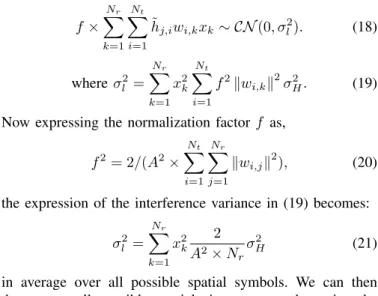Performance Analysis of Extended RASK under Imperfect Channel Estimation and Antenna Correlation
Texte intégral
Figure



Documents relatifs
Density and hazard rate estimation for right- censored data by using wavelet methods.. An alternative point of view on
maximum ratio combining (MRC) and zero-forcing (ZF) re- ceivers on the uplink (UL) in the large system limit. It has been shown in [1] that a linear receiver can be used to
Different approaches to solve the Joint Angle and Delay Estimation (JADE) problem have been proposed in the lit- erature (see e.g., [4], [5] and references therein) and it is shown
(11) In summary, the channel depends on the 7P physical param- eters φ given in (3), but the considered model depends on only 7p parameters whose optimal values make up the
H ˆ LS = X −1 Y (19) For the Block-type pilots pattern, the LS estimation at the symbol pilot is exactly the raw channel estimation. An interpolation in time is then performed
In this context, we propose a nonparametric estimation strategy of the hazard rate, based on a regression contrast minimized in a finite dimensional functional space generated
Abstract—In this work, we study the impact of imperfect sharing of the Channel State Information (CSI) available at the transmitters on a Network MIMO setting in which a set of
Specular methods constitute vi- able candidates for channel tracking and prediction, since the insight they provide into the actual channel structure – namely, separation of the